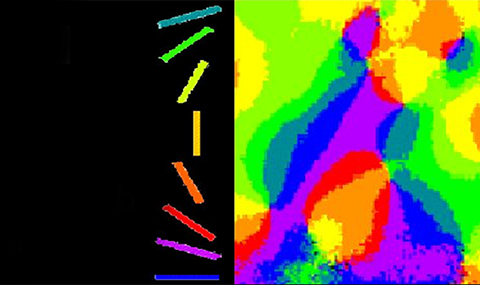Optical imaging technologies innovated by us have unprecedented temporal and spatial resolutions for imaging real-time cortical processing and higher brain functions in a way not previously feasible. The information acquired addresses unmet needs in neuroscience, cardiology and other organs of the body like the eye. Major contributions are as follows: (1) discovering the visual cortex functional architecture for several sensory attributes and their geometrical relationships; (2) finding that the subthreshold activity spreads laterally far beyond retinotopic and somatotopic borders, indicating intricately distributed processing; (3) discovering the large effect of internal ongoing activity on sensory processing; (4) discovering that sensory stimulation diminishes the ongoing activity; (5) revealing the interactions between evoked activity and microcirculation. We coined the name optical imaging (Nature, 1984). The technology had an exceptional impact; the term optical imaging appears in Google with more than 100,000,000 hits. With recent advances in photo-stimulation (Grinvald et al., Science 1983) by optogenetics (Nagel et al., 2003, Boyden et al., 2005) an all-optical physiology pioneered by our group, has now become a reality in many laboratories, and numerous clinical applications are being developed.
In addition, our brain mapping, based on hemoglobin signals, found that the hemodynamic signals are very local. Thus, our publications laid the foundation for the innovations of functional f-MRI and NIR noninvasive imaging for humans, offering numerous research and bio-medical applications directly on the human brain.
The retinal functional imager (RFI), which was innovated for noninvasive imaging of the retina has created a quantum leap in early diagnostics and monitoring treatment, thus preventing blindness as well as stopping the progression of other vascular diseases affecting millions of patients. Indeed, our noninvasive angiography was adapted by the largest ophthalmic company like Zeiss and Topcon is already being used by thousands of ophthalmic hospitals around the globe, for prevention and treatment management of blinding diseases as well as a novel research tool for neurological and vascular diseases.



